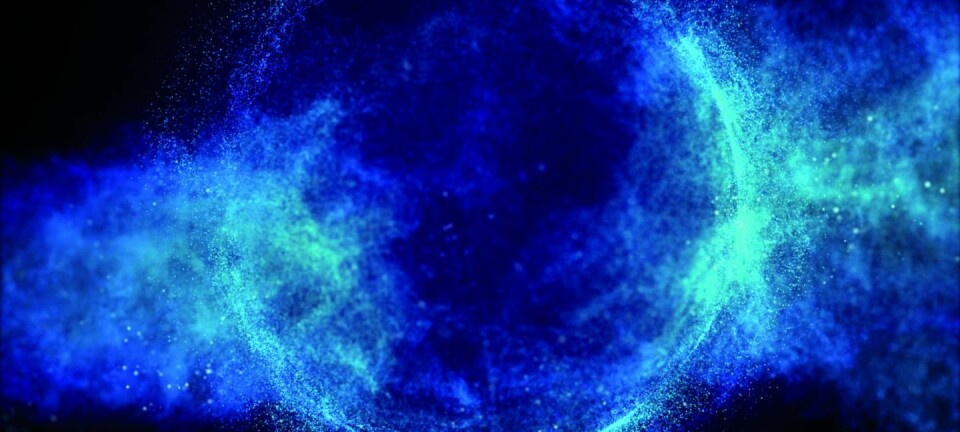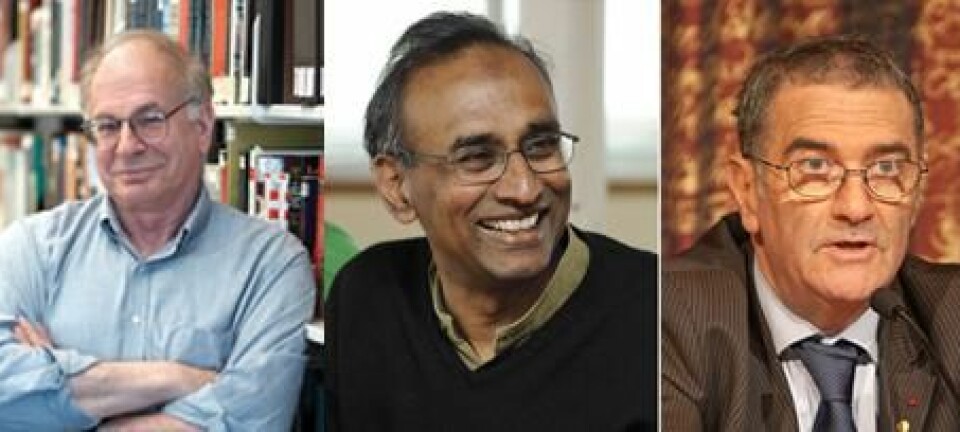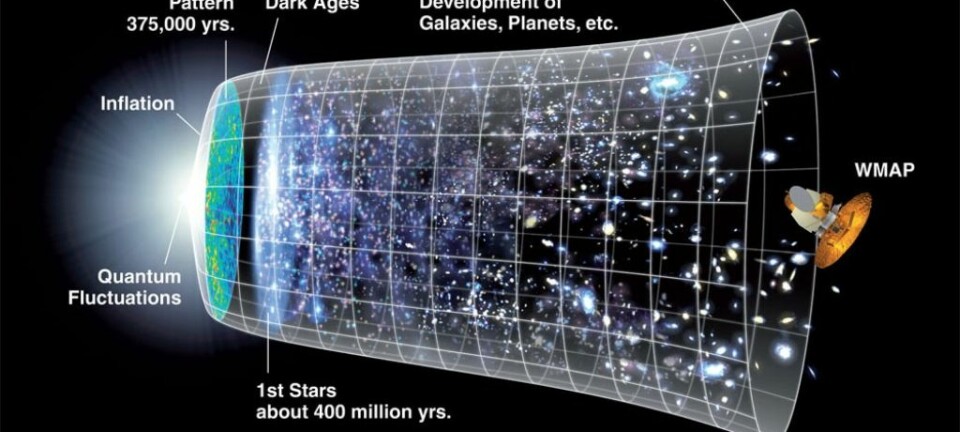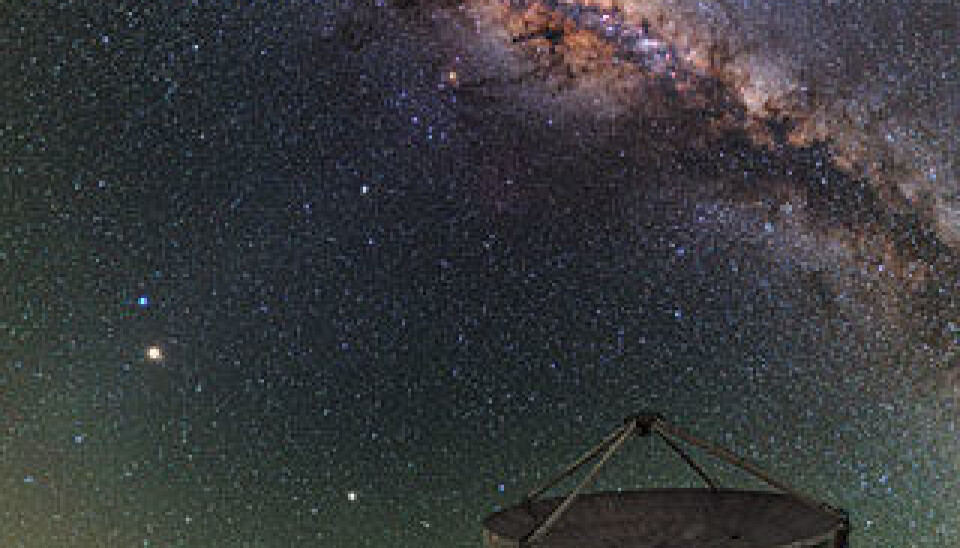
Nobel prize winner: Let’s find dark matter and dark energy
Dark matter and dark energy continue to be cosmological conundra for physicists worldwide. Nobel prize winner Brian Schmidt offers his perspective in an interview.
“It’s an illusion that there is a reality out there that we can pin down,” said Professor Brian Schmidt during a talk in Copenhagen at the biennial Euroscience Open Forum conference.
Schmidt is an astrophysicist at the Australian National University. In 2011 he was awarded a Nobel Prize for proving that the expansion of the universe is accelerating.
Now he’s contemplating further questions concerning dark matter and dark energy. Together, dark matter and dark energy makes up for 95 per cent of the known universe.
“The whole point of dark matter is that it doesn’t interact with anything — even though we’re pretty sure it’s a particle,” he said. “You are effectively invisible to it, and it to you.”
A never-ending mystery?

There are four fundamental forces in the Universe: electromagnetism, the strong force, gravity and the weak force. The weak force is especially significant to physicists who are trying to uncover the mysteries of dark matter, because they expect it to interact on the level of the weak force.
“We have lots of evidence that it interacts very slightly or not at all. This fits most of the observations that we have — with a couple of niggling things — that may or may not be right,” says Schmidt.
If it does turn out that dark matter does not interact at any level, then we can’t make it and we can’t detect it. "That would be really frustrating", Schmidt sighs, "It could potentially stay a mystery to us forever".
Tracking dark matter
Luckily, there are other ways of examining dark matter. Its existence is revealed by patterns in gravity, which is why the best place to search for it is near the centre of the Milky Way, where the gravitational pull is highest.
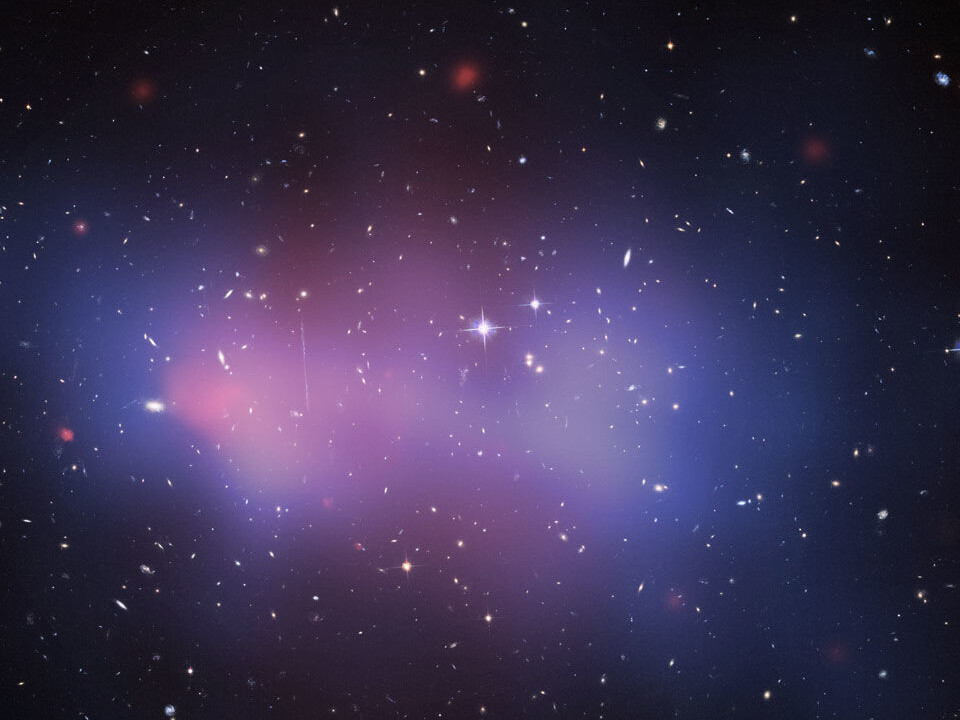
“When you look out into space, you don’t see it [dark matter], because it goes right through itself,” Schmidt shrugs his shoulders and continues “the only way we know it’s there is by its gravity, because it can attract things”.
“From my perspective, as an astronomer, we can test dark matter in other ways,” says Schmidt. He’s particular keen on three ways:
1. By observing how light from other galaxies bends by the gravitational potential of the dark matter.
2. The structure of dark matter can be examined by analysing the cosmic microwave background. This allows scientists to see how galaxies form and change over time. By this they are able to detect that there in fact is some mass,in the form of dark matter, which is not yet accounted for.
It is an illusion that there is a reality out there that we can pin down.
3. Near the center of our galaxy there is a massive black hole. Stars, often binary stars, frequently approach it and get violently flung back out into space at many thousands kilometers per second.
The rate at which these stars slow down can be used to measure the gravitational force pulling in different directions.
This is something which Schmidt is excited about measuring, because it could reveal more about the location of dark matter from its gravitational pull.
Could the Higgs boson be the looking glass?
Lately, there has been various suggestions that the Higgs boson could be our gateway to understanding dark matter. Schmidt evaluates how feasible this idea is.
Dark energy has the property, that the bigger the universe becomes the more dark energy we will have.
"You would not use the Higgs particle itself, it is more complex than that”’ he informs me. "If we imagine that supersymmetry is right; I have my suspicions that it might be a dead theory, but let’s wait and see. Professor Frank Wilczek, who is one of the inventors of it, he is happy to bet me that it’s not dead.”
Schmidt smiles secretly, which makes one wonder, if there in fact is a bet going on. “He’s very convinced that it must be right — it’s too beautiful a theory. If we imagine this, then there are loads of particles that have yet to be found”.
The theory of supersymmetry suggests that in the beginning the Universe was loaded with heavy particles. Here each particle has a superpartner. The Universe still has traces of these particles, but they have decayed into much lighter forms, one of them being the dark matter particle.
The attraction to this theory is that it solves many of the problems, but as Schmidt emphasizes “we need to see all those other particles”. For the time being, the idea of superpartners remains nothing more than a 'beautiful story'.
Hunting down missing particles
It seems a large part of fundamental physics is still an unsolved mystery. There are two reactions to this: either giving up and or following Professor Schmidt, who is convinced that the field has a future.
When the world’s biggest and most powerful particle accelerator, the Large Hadron Collider, turns back on next year, some answers should emerge, he says.
“It is clear that we need particle physicists to find the damn thing [dark matter] in the lab,” says Schmidt. "I have very good reason to believe that they could”
“Either it has an extremely high mass which makes it impossible to create it in the LHC or alternatively one could imagine, that it simply does not interact, even by the weak force” explains Schmidt and sighs, “that would make it completely invisible”.
Dark matter does not like to interact, therefore it is impossible to see it directly in a collider, like the LCH at CERN. If they manage to create dark matter, then it would immediately whizz straight out of the detector, taking some energy with it.
Energy is conserved so physicists know straight away if something goes missing. This is called 'missing energy'. "If we find that a couple of TeV have left the building — and we don’t know where they went — that’s when we know that the dark matter is there," says Professor Schmidt.
The sinister energy of our universe
Dark matter is only one of the major questions which astrophysicist are struggling with today. The concept of dark energy is another pressing question. Its nature seems to be as sinister as the name suggests.
“So what is dark energy? Well, the simple answer is that we don't know. It seems to contradict many of our understandings about the way the universe work” it says on the Hubble telescopes homepage.
The cosmological constant effectively explains the properties of dark energy. It says that there is a constant, never changing energy, which is part of space itself. ‘All predictions we have made on the basis of this have been proven in nature’, explains Professor Schmidt knowingly.
‘It’s really weird! That’s why we don’t like this stuff'
Einstein introduced the cosmological constant, which he later called “the biggest blunder of his life”. Nevertheless, this has been picked up by cosmology in order to explain dark energy.
The problem is that nobody knows why this energy should be part of space in the first place. Professor Schmidt speculates that it may change over time, but not enough in order for us to detect it.
"Dark energy has the property that the bigger the Universe becomes, the more dark energy we will have" and adds immediately, "It’s really weird! That’s why we don’t like this stuff”.
How the ‘stuff’ works
Imagine squeezing a bottle lightly, then the plastic will pop back out, when you let go. If the bottle is filled with dark energy, then instead of popping back out again, it would continue to suck inwards.
For the Universe this means that if it is expanding, as we know it is, it wants to expand faster. "It’s sort of magical stuff, because it has this negative pressure to gravity," explains Professor Schmidt, clapping his hands together in excitement and continues,
"There must be something smudged across the universe in order for this acceleration to occur". The most useful model to test this idea is the Standard Model, which predicts an undiscovered heavy particle.
"this is a firm prediction, which we can test" he says, "at this point, everything we do, more or less, looks right. There are a few little wiggles, where the centres of galaxies look a little wrong — although not convincingly so — that is giving us hints, that maybe we need to look at something different. Like, lighter particles" continues Professor Schmidt.
"Lighter dark matter particles would be able to smear out matter in the galaxies, so that instead of getting these really ‘lumpy’ dark matter galaxies, which is what the heavy particle theory predicts, you get a universe, which is smoother and has many galaxies. This is perhaps closer to what is observed" he says.
“I’m an agnostic”
The one thing that Professor Schmidt is completely sure about is that whatever theory we choose to rely on to explain dark matter and dark energy, it must be proven experimentally. "If I can’t test it, it ain’t real", he smiles lightheartedly.
"Then it’s just a nice story, people also tell me stories involving turtles, God, and so on — these stories are all equally impossible to test. Mulitiverses, for example, is a nice theory, it sounds good, but if I can’t test it, I don’t believe it. I don’t say it’s wrong, but I can’t say that it is right either. At this point I am an agnostic in it’s purest form," he concludes with a smile.
